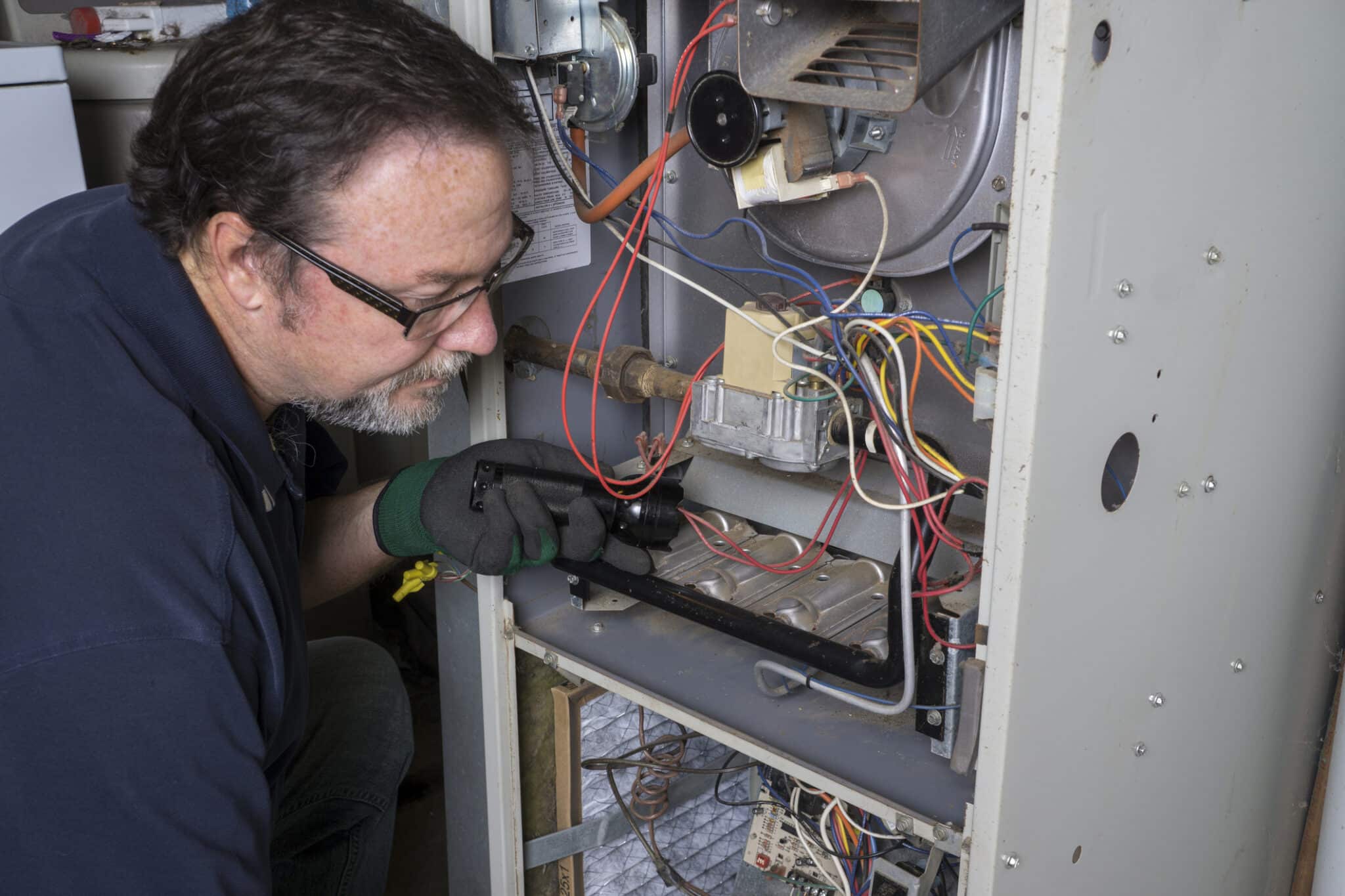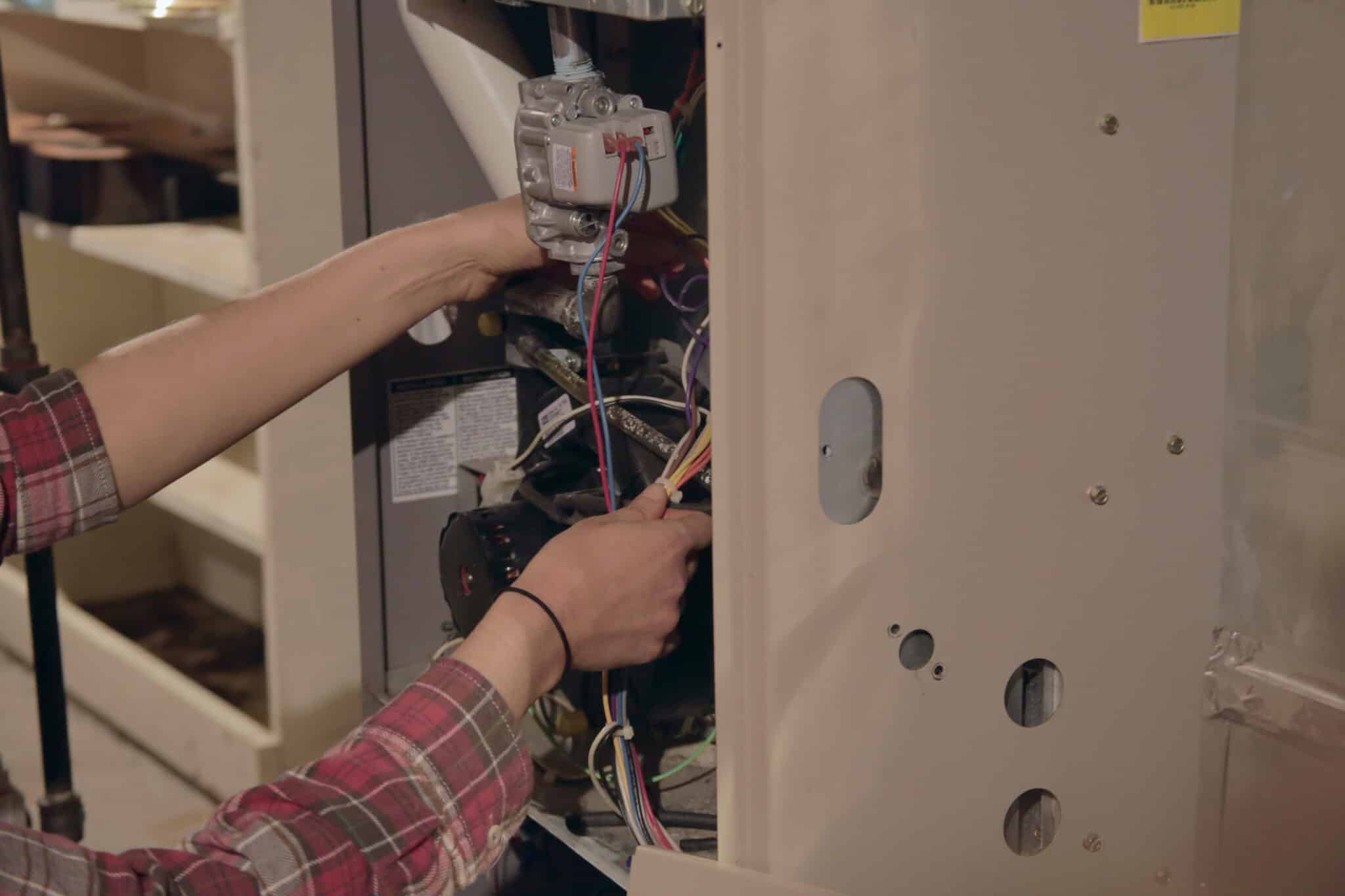A furnace tune-up is one of the most effective ways to lower your winter energy bills while keeping your home comfortable. As temperatures drop, your heating system works harder to maintain a cozy indoor environment. Without proper maintenance, it can become inefficient, leading to higher energy consumption and costly repairs.
Regular tune-ups ensure that your furnace runs smoothly by optimizing its performance and catching potential issues early. When a system is clean and well-maintained, it uses less energy to produce the same amount of heat. This means you can enjoy a warm home without worrying about excessive utility bills.
In this article, we’ll explore how a furnace tune-up improves efficiency, prevents breakdowns, and ultimately saves you money. Whether you live in Spring Valley, CA, or the surrounding area, scheduling annual maintenance can help you prepare for the colder months while avoiding unexpected expenses.
By the end of this guide, you’ll understand why a professional furnace tune-up is a smart investment and how it can make a noticeable difference in your winter heating costs.
What Is a Furnace Tune-Up?
A furnace tune-up is a professional maintenance service designed to keep your heating system running efficiently throughout the winter. It involves a thorough inspection, cleaning, and adjustment of key components to ensure optimal performance. This routine maintenance helps prevent breakdowns, improve energy efficiency, and extend the life of your furnace. Without regular care, your system may struggle to heat your home effectively, leading to higher energy costs and potential safety hazards.
During a furnace tune-up, an HVAC technician inspects critical parts such as the burners, heat exchanger, blower motor, and thermostat. The process includes cleaning accumulated dust and debris, lubricating moving parts, tightening electrical connections, and testing safety controls. The technician may also check for carbon monoxide leaks and ensure proper airflow to prevent overheating or inefficiencies. These steps help your system operate smoothly and reduce the risk of malfunctions when you need heat the most.
One of the biggest benefits of a furnace tune-up is its ability to identify potential issues before they turn into costly repairs. Small problems, like a clogged filter or an inefficient burner, can lead to higher energy bills and reduced heating performance. Left unchecked, minor issues can strain the system, forcing it to work harder and increasing wear and tear on components. By addressing these concerns early, you can avoid unexpected breakdowns and keep your home warm all winter.
Regular maintenance isn’t just about efficiency, it also ensures safety. A cracked heat exchanger or faulty gas valve can lead to carbon monoxide leaks, posing serious health risks. Dirty or malfunctioning furnaces can also increase the risk of electrical issues or fire hazards. With a professional furnace tune-up, you can have peace of mind knowing your heating system is operating safely and efficiently. Scheduling this service before winter arrives ensures that your furnace is ready to handle the colder months without interruption.

How a Furnace Tune-Up Improves Efficiency
A well-maintained heating system operates more efficiently, reducing energy consumption and lowering utility bills. Without routine servicing, internal components can become dirty or misaligned, forcing the system to work harder to maintain a comfortable temperature. Over time, this added strain can lead to unnecessary wear and higher energy costs.
Preventative care ensures optimal performance by addressing airflow restrictions, adjusting key components, and detecting minor issues before they escalate. Understanding the factors that impact efficiency can help homeowners maximize their heating system’s performance throughout the winter season.
Improved Airflow and Heat Distribution
One of the biggest factors affecting efficiency is airflow. When dust and debris accumulate inside the system, they can clog burners, restrict vents, and interfere with the blower motor. This obstruction forces the furnace to run longer to achieve the desired temperature, leading to increased energy consumption.
During routine servicing, HVAC professionals clean key components to eliminate blockages and ensure proper circulation of warm air. A clean system distributes heat more evenly, preventing cold spots in different areas of the home. This balanced heating reduces the strain on the unit, helping it operate at peak efficiency.
The Role of Calibration in Energy Savings
Proper calibration plays a critical role in energy efficiency. If the thermostat is not accurately reading temperatures, it can cause the furnace to cycle on and off too frequently, leading to wasted energy. A technician will test and adjust thermostat settings to ensure precise temperature control.
Gas pressure and ignition systems also require fine-tuning to optimize combustion. If fuel is not burning efficiently, heat output decreases, and more energy is needed to maintain warmth. Adjusting these components helps ensure the system operates at maximum efficiency while using the least amount of energy.
Preventing Overworked Components
A heating system that works harder than necessary is not only inefficient but also prone to premature wear and tear. Failing parts such as blower motors, dirty filters, and worn belts can reduce efficiency and put added strain on the system. When these components are not functioning correctly, the furnace compensates by running longer, consuming more energy in the process.
Routine inspections help identify these minor issues early. Replacing a clogged filter or a worn-out motor in a timely manner prevents excessive energy use and extends the overall lifespan of the heating system. Small adjustments can lead to noticeable savings on monthly energy bills.
The Long-Term Benefits of Regular Servicing
Investing in annual maintenance keeps heating systems running at their best. A well-tuned unit not only reduces energy waste but also prevents costly repairs by catching potential problems early. With improved efficiency, homeowners can enjoy a warm and comfortable home without the burden of excessive heating costs.
By prioritizing preventative care, you can maintain peak system performance, reduce energy expenses, and extend the life of your furnace. Ensuring your heating system receives professional attention each year is one of the simplest ways to stay warm while keeping energy bills under control.
The Connection Between a Furnace Tune-Up and Lower Energy Bills
A furnace tune-up directly impacts your energy bills by improving efficiency and reducing wasted energy. When your heating system runs smoothly, it requires less fuel or electricity to maintain a comfortable indoor temperature. This translates to lower monthly utility costs, especially during the peak winter months when heating demand is at its highest.
One way a furnace tune-up lowers energy bills is by ensuring proper airflow. A dirty or clogged air filter, blocked vents, or dust buildup inside the system can restrict airflow, forcing the furnace to work harder. This extra strain leads to increased energy consumption. During a professional tune-up, an HVAC technician cleans or replaces filters, checks for obstructions, and ensures your system is circulating warm air efficiently.
Another factor is the furnace’s combustion efficiency. If the burners are dirty or the gas pressure is misaligned, the furnace may not burn fuel efficiently, leading to heat loss and unnecessary energy expenses. A furnace tune-up includes inspecting and adjusting the burner system to maximize fuel efficiency, helping you get the most out of every dollar spent on heating.
A properly calibrated thermostat also plays a key role in reducing heating costs. A technician will check your thermostat settings to ensure accurate temperature readings, preventing the furnace from running longer than necessary. Upgrading to a programmable thermostat can enhance savings by automatically adjusting temperatures based on your daily schedule.
Investing in a yearly furnace tune-up can lead to noticeable savings over time. By maintaining peak efficiency and reducing wear and tear, you not only lower your energy bills but also extend the lifespan of your heating system, preventing costly replacements in the future.
Preventing Costly Repairs with Regular Tune-Ups
A furnace tune-up doesn’t just improve efficiency, it also helps prevent expensive repairs by catching small problems early. Heating systems experience wear and tear over time, and minor issues can escalate into major breakdowns if left unchecked. Regular maintenance allows HVAC technicians to identify potential concerns before they become costly emergencies.
One common problem that a furnace tune-up can prevent is a worn-out blower motor. The blower is responsible for circulating warm air throughout your home. If it becomes clogged with dust or its bearings wear down, it may struggle to function, leading to overheating and eventual system failure. By lubricating moving parts and cleaning components, a technician ensures the blower operates smoothly, reducing strain on the furnace.
Cracked heat exchangers are another serious issue that regular maintenance helps prevent. Over time, heat exchangers can develop cracks due to repeated heating and cooling cycles. A damaged heat exchanger not only reduces efficiency but can also lead to dangerous carbon monoxide leaks. During a furnace tune-up, a professional inspects the heat exchanger for any signs of damage, ensuring your system remains safe.
Electrical and ignition system failures can also lead to costly repairs. Loose wiring, faulty sensors, or ignition problems can prevent the furnace from starting or cause it to shut down unexpectedly. During a tune-up, technicians check electrical connections, test ignition components, and make necessary adjustments to prevent sudden failures.
By scheduling an annual furnace tune-up, you can avoid unexpected repair bills and extend the lifespan of your heating system. Preventative maintenance is a cost-effective way to ensure reliable performance throughout the winter while reducing the risk of emergency repairs.
Extending Your Furnace’s Lifespan
A furnace tune-up does more than just improve efficiency and prevent costly repairs, it also extends the overall lifespan of your heating system. Furnaces are a long-term investment, and with proper maintenance, they can last 15–20 years or more. However, neglecting regular upkeep can lead to premature failure, forcing you to replace your unit much sooner than expected.
One of the biggest factors affecting a furnace’s longevity is wear and tear on internal components. Over time, dust and debris accumulate inside the system, causing parts like the blower motor and heat exchanger to work harder. This extra strain can lead to overheating, increased friction, and faster deterioration of essential components. A furnace tune-up includes cleaning and lubricating these parts, reducing stress on the system and ensuring smooth operation.
Another critical aspect of longevity is preventing breakdowns caused by small, unnoticed issues. Minor problems, such as clogged filters, loose electrical connections, or an improperly adjusted gas valve, can force the furnace to work inefficiently. When left unaddressed, these issues cause the system to overheat or short-cycle, significantly reducing its lifespan. A professional furnace tune-up catches these minor faults before they lead to major system failures.
Proper airflow also plays a key role in extending a furnace’s life. When vents, ducts, or air filters are clogged, the furnace has to work harder to push warm air throughout your home. This increased strain can lead to overheating and early system wear. During a tune-up, technicians check for airflow blockages and ensure your furnace operates at its best.
Investing in annual furnace tune-ups is a simple way to maximize the lifespan of your heating system. By keeping it in top condition, you can avoid premature replacements and enjoy reliable warmth for many years.
Signs Your Furnace Needs a Tune-Up
Recognizing when your heating system requires maintenance can prevent unexpected breakdowns and high energy bills. While annual servicing is recommended, certain warning signs indicate that your unit may need attention sooner. Addressing these issues early ensures your home stays warm and comfortable throughout the colder months.
One of the most common signs of trouble is uneven heating. If some rooms feel significantly colder than others, it could mean airflow is restricted, or the system is struggling to distribute warm air efficiently. A professional inspection can identify and resolve the cause, whether it’s a clogged filter, blocked vents, or an aging blower motor.
Unusual noises such as banging, rattling, or squealing should never be ignored. These sounds often signal loose or worn-out components, which can lead to more serious mechanical failures if left unchecked. Routine maintenance helps catch these minor issues before they escalate into expensive repairs.
An unexplained increase in energy bills is another red flag. If your heating costs rise despite no change in usage, the system may be overworking due to dirt buildup, faulty sensors, or inefficient combustion. A well-maintained unit operates more efficiently, helping to lower your monthly expenses.
Frequent cycling, where the system turns on and off more often than usual, can indicate thermostat problems, airflow restrictions, or overheating. Regular maintenance helps correct these inefficiencies, ensuring smooth and consistent operation.
If your furnace is showing any of these warning signs, scheduling a professional checkup can restore efficiency and prevent unexpected failures when you need heat the most. Taking action early keeps your home comfortable while protecting your heating system from unnecessary strain.
The Best Time to Schedule a Furnace Tune-Up
Timing is everything when it comes to maintaining your heating system. While it’s essential to schedule regular service, choosing the right time of year can maximize efficiency and prevent last-minute emergencies. The best time for a professional checkup is before the cold weather arrives, ensuring your system is prepared for peak usage.
Early fall is ideal for routine maintenance because temperatures are still mild. HVAC professionals tend to have more availability, making it easier to secure an appointment that fits your schedule. Servicing your unit before winter allows technicians to identify any potential issues and make necessary adjustments before you rely on your system daily.
Waiting until winter to schedule maintenance can be risky. As temperatures drop, HVAC companies experience a surge in service requests due to system failures and emergency repairs. This increased demand may result in longer wait times, leaving your home without heat when you need it most. By planning ahead, you avoid the inconvenience of an unexpected breakdown.
For homeowners in Spring Valley, CA, the mild fall weather provides an excellent opportunity to get ahead of potential issues. Even though winters in Southern California are not as harsh as in other regions, nighttime temperatures can still drop significantly. A properly maintained system ensures your home stays warm without excessive energy use.
Scheduling maintenance annually is the best way to keep your heating system in top condition. By being proactive, you enhance efficiency, reduce repair costs, and ensure reliable comfort throughout the winter months.

FAQ: Furnace Tune-Ups and Energy Savings
1. How often should I get a furnace tune-up?
It’s recommended to schedule a professional tune-up at least once a year, ideally in the early fall before the heating season begins. Regular maintenance ensures efficiency, prevents costly repairs, and extends the lifespan of your system.
2. Can a tune-up really lower my energy bills?
Yes! A properly maintained heating system runs more efficiently, using less energy to heat your home. Cleaning components, checking airflow, and calibrating the thermostat all contribute to reduced energy consumption and lower monthly utility costs.
3. What happens if I skip annual maintenance?
Skipping maintenance can lead to reduced efficiency, higher energy bills, and an increased risk of breakdowns. Dust buildup, worn-out parts, and unnoticed issues can force the system to work harder, leading to costly repairs or premature failure.
4. How long does a professional tune-up take?
A typical tune-up takes between 60 and 90 minutes, depending on the condition of your system. Technicians perform a thorough inspection, cleaning, and adjustment to ensure your furnace is operating at peak performance.
5. Is a furnace tune-up worth the cost?
Absolutely! The savings from improved efficiency and fewer repairs often outweigh the cost of an annual service. Plus, regular maintenance helps extend the lifespan of your system, delaying the need for expensive replacements.



















